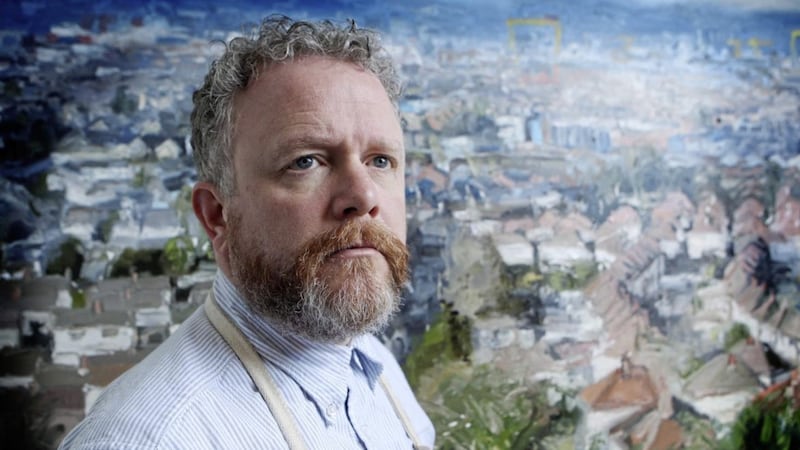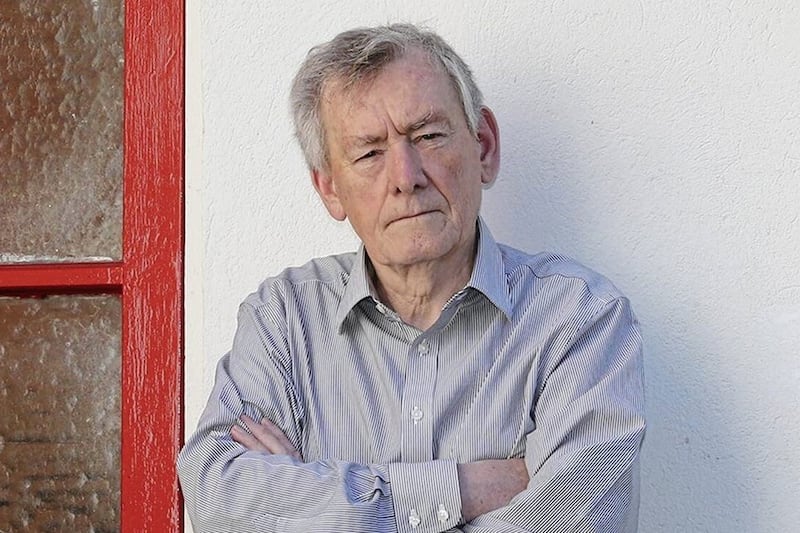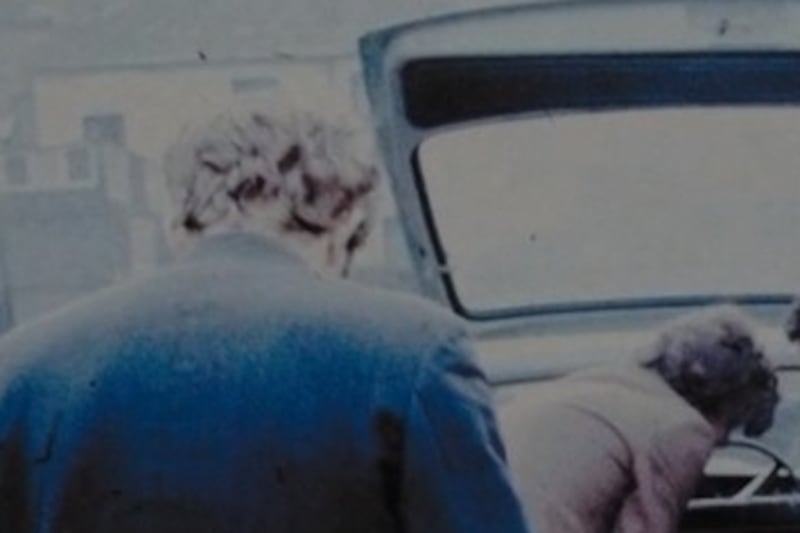THERE'S an old coach house in rural north Down that both the former first minister Ian Paisley and ex-deputy first minister Martin McGuinness once visited, below the scrutiny of the media or the public.
Their separate trips were for sittings at the studio of artist Colin Davidson, whose large-scale portraits of stars of stage, screen and sports have made him into an internationally acclaimed painter. Davidson taught Brad Pitt to paint and received royal approval with his informal portrait of Queen Elizabeth – viewed as the first 'Irish painting' of the British monarch – which was unveiled in November.
"What was lovely is that the queen unveiled the painting herself and that’s quite rare," says Davidson as we chat over a mug of tea in his rustic brick studio close to his Crawfordsburn home, his portrait of Holywood/Hollywood heartthrob Jamie Dornan looking on.
"Afterwards I was asked to go by the palace press secretary and speak to [the queen] straight away. I can't believe I said this to her, but I said, 'Are you still talking to me, Ma’am'?'
“She turned round, laughed and said, 'Of course I am'. She talked about the painting being splendid, so I was delighted of course."
Davidson's street cred will be bumped up further in May when his portrait of singer/songwriter Ed Sheeran, one of the most successful and prolific pop stars around, is unveiled in London.
Then, over the summer, the 49-year-old father-of-two will unveil his portrait of Nobel Peace prize winner John Hume at the Royal Hibernian Academy in Dublin for the first time.
Some time in the future, Davidson's portraits of Paisley and McGuinness – created to be viewed together as an 'inseparable viewing' – will be shown, no doubt to another warm reception.
He is enjoying a real moment in his career as it seems that he’s the portraitist of choice to a host of notables. But Davidson, a painter who seeks to get behind the facades of his subjects, is just as interested in capturing the life essence of ordinary folk, as his latest exhibition in London shows.
'Jerusalem' is Davidson's visual exploration of the 'tags and label's' of being a Muslim, Christian or Jew in the divided holy city; a collection which includes a politician, a Benedictine monk, a doctor, a peace activist, a hotel worker, a Holocaust survivor, all representing a cross-section of people who live together with conflict, prejudice and separation.
It's his latest full collection following his haunting exhibition Silent Testimony – 18 portraits of people who all experienced loss, trauma and pain as a consequence of the Troubles.
Davidson explains: "I didn’t want to do another collection of heads – I wanted there to be meaning behind it. Jerusalem is probably the most contested piece of land in the world and a place of ancient culture. Growing up in an environment of conflict, I thought it would be interesting to travel there and paint Muslims, Christians and Jews who are used to the label or badge of Muslim, Christian and Jew being applied in the same way where I grew up very much in the environment where it was, seemingly and regrettably, critically important to know whether somebody was a Catholic or a Protestant."
The paintings are deliberately entitled with nothing more that the subject's first name.
"The point I was making was stripping the badge away, stripping that façade away and actually look at the human being, to what we share as opposed to what makes us different. I think it just speaks so much that we as human beings are pre-programmed through society to apply a prejudicial badge."
Judging by the Porsche sports car and 4 x4 sitting outside the front door, it's evident that his career is going particularly well for Davidson. He sold his design business in 1999 when the call to paint full time was too irresistible to ignore.
Initially his interest lay in urban Belfast landscapes – something which he is currently re-exploring, along with paintings of the human form. Painting portraits, perhaps surprisingly, was not something that interested him.
"I never termed myself a portrait painter as such, and never felt that the process that I used was quite consistent with what I viewed as the process of making portraits," he says.
He fell into his fame of being a painter of large-scale portraits by following his own nose for who and what interested him with his portrait of Duke Special. Fascinated by the Belfast musician’s look, he casually approached his friend several years earlier to sit for a portrait.
He explains: "People often ask me about the scale of my works and the scale really relates to them. I had a canvas I had stretched for an urban painting and it happened to be lying around. I felt I wanted to make Duke larger than life. When you do that, you allow the head to be something else.
"So the eyes, I automatically treated them in the way I treat the glass in the shop-front paintings that I did; the hair was almost treated like a branch of a tree the way the dreadlock came down; the flesh was like a landscape. So it could become those things at that scale but still be a head.
“I submitted it to the RHA and got an award there and suddenly I was getting more attention for the one painting than for any I had done before."
Dublin singer Glen Hansard used Davidson's portrait of him as an album cover, then recommended Davidson to writer and director Roddy Doyle – and his reputation grew from there.
The former designer and business owner from Belfast suddenly found himself caught up in a 'creative thread' that led to one major subject after another wanting to sit for him, to meeting Liam Neeson in his sister's home in Ballymena and then being commissioned by Co-Operation North to paint the queen.
But he views his most important work as the Silent Testimony collection; his reaction to the peace process.
"As time went on I realised that this massive section of our community; people who suffered loss in the Troubles were in some sense paying for everyone else’s peace,” he says. "I felt a huge degree responsibility in ensuring that one person’s story was told as faithfully and honestly through the painting as it could be.
"What I saw behind the face of the people affected very deeply. I put the energy of what I saw and felt back into the work. They are not happy paintings and it’s not an easy exhibition to look at."
To Davidson, a face is not simply a combination of eyes, nose, mouth and cheeks – it's a whole new world ready to be explored in a mesmerising and illuminating canvas.
He says: "Every new face is a new landscape that I have a chance to explore. The process and format is the same but I haven’t got tired of it."
:: Jerusalem is being shown at the Oliver Sears Gallery, London, until March 28.







